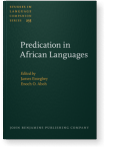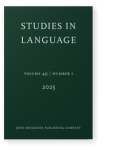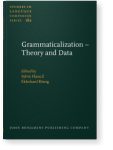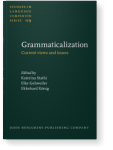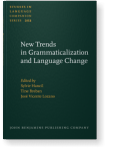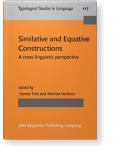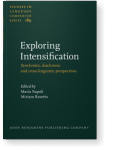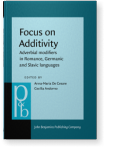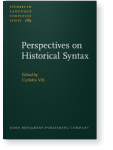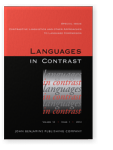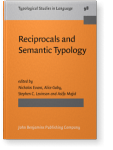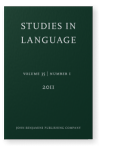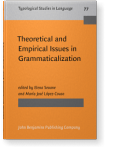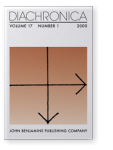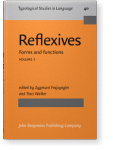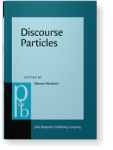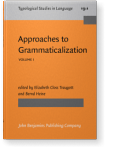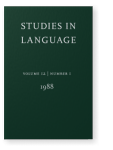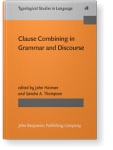Ekkehard König
List of John Benjamins publications for which Ekkehard König plays a role.
Book series
Journal
ISSN 0378-4177 | E-ISSN 1569-9978
Titles
Grammaticalization – Theory and Data
Edited by Sylvie Hancil and Ekkehard König
[Studies in Language Companion Series, 162] 2014. viii, 293 pp.
Subjects Historical linguistics | Morphology | Syntax | Theoretical linguistics
Grammaticalization: Current views and issues
Edited by Katerina Stathi, Elke Gehweiler and Ekkehard König
[Studies in Language Companion Series, 119] 2010. vii, 379 pp.
Subjects Historical linguistics | Morphology | Syntax | Theoretical linguistics
2024 The historical development of asymmetries: The case of directional demonstratives in Germanic Studies in Language: Online-First Articles | Article
The structuring and encoding of space through language, the shape of the linguistic inventories found in individual languages, as well as the symmetries and asymmetries manifested by such systems have received a great deal of attention during the last four decades. The vast majority of the… read more
2022 Chapter 13. On the development of OE swā to ModE so and related changes in an atypical group of demonstratives English Historical Linguistics: Change in structure and meaning, Los, Bettelou, Claire Cowie, Patrick Honeybone and Graeme Trousdale (eds.), pp. 309–344 | Chapter
Building on previous comparative studies and comparative reconstructions (König 2012, 2015), we trace the syntactic and semantic development of OE swā, of its adverbial counterpart swylc and of þus to Modern English so, such and thus on the basis of relevant text corpora for OE and ME. In… read more
2018 Functional similarity despite geographical distance: On the grammaticalization of German mal and Chinese yíxià New Trends in Grammaticalization and Language Change, Hancil, Sylvie, Tine Breban and José Vicente Lozano (eds.), pp. 55–74 | Chapter
German mal is the reduced version of einmal, i.e. of a construction combining the numeral ‘one’ with a noun originally denoting a salient local unit and later salient temporal units (occasions, frequency). The final stage of the development was a process of desemanticization of the frequency… read more
2017 Chapter 5. The deictic identification of similarity Similative and Equative Constructions: A cross-linguistic perspective, Treis, Yvonne and Martine Vanhove (eds.), pp. 143–164 | Chapter
Starting out from the observation that comparisons and assessments of similarity and difference are fundamental cognitive processes and play an important role in a variety of human activities, this article shows that the most basic verbal means for the expression of similarity are demonstratives of… read more
2017 Chapter 1. The comparative basis of intensification Exploring Intensification: Synchronic, diachronic and cross-linguistic perspectives, Napoli, Maria and Miriam Ravetto (eds.), pp. 15–32 | Chapter
This paper argues that the ubiquitous cognitive process of comparing and the resultant judgements of similarity and dissimilarity also underlie the semantic processes of intensification and grading to a large extent. This comparative basis is visible both in the formal properties of many… read more
2017 Chapter 1. Syntax and semantics of additive focus markers from a cross-linguistic perspective: A tentative assessment of the state of the art Focus on Additivity: Adverbial modifiers in Romance, Germanic and Slavic languages, De Cesare, Anna-Maria and Cecilia Andorno (eds.), pp. 23–44 | Chapter
Looking back on three decades of research on focus markers, I will make a cautious attempt to give an overview over this rich set of relevant publications, trying to identify and distinguish general trends, important results, open questions, obvious gaps and errors. I will provide further evidence… read more
2015 Manner deixis as source of grammatical markers in Indo-European languages Perspectives on Historical Syntax, Viti, Carlotta (ed.), pp. 35–60 | Article
Recent typological and areal studies of demonstratives, such as Himmelmann (1997), Diessel 1999, 2006), Dixon (2003), Güldemann (2008) and Krasnoukhova (2012), have contributed extensively to our knowledge of possible deictic systems. What is notably absent from these descriptions, however, are… read more
2014 Introduction Grammaticalization – Theory and Data, Hancil, Sylvie and Ekkehard König (eds.), pp. 1–10 | Article
2012 Contrastive linguistics and language comparison Contrastive Linguistics and other Approaches to Language Comparison, Hüning, Matthias and Barbara Schlücker (eds.), pp. 3–26 | Article
After receiving enthusiastic support during the 1960s and 1970s, the program of ‘Contrastive linguistics’ led a somewhat modest, if not marginal, existence during the two subsequent decades. The main reason for the apparent failure of this program was, of course, that the high hopes seen in its… read more
2011 19. Reciprocals and semantic typology: Some concluding remarks Reciprocals and Semantic Typology, Evans, Nicholas, Alice Gaby, Stephen C. Levinson and Asifa Majid (eds.), pp. 329–340 | Article
In the concluding remarks that follow the results of the preceding articles are examined and discussed in the light of concepts of reciprocity distinguished in linguistics and other disciplines. It is shown that these contributions enlarge the empirical basis for the study of reciprocity and… read more
2011 Reflexive nominal compounds Studies in Language 35:1, pp. 112–127 | Article
This paper presents a detailed analysis of reflexive nominal compounds like self-assessment in English and their counterparts in nine other languages, whose number and use has strongly increased in these languages over the last several decades. The first component of these compounds is shown to be… read more
2010 Introduction Grammaticalization: Current views and issues, Stathi, Katerina, Elke Gehweiler and Ekkehard König (eds.), pp. 1–14 | Article
2008 Possessive adjectives as a source of intensifiers Theoretical and Empirical Issues in Grammaticalization, Seoane, Elena and María José López-Couso (eds.), pp. 183–206 | Article
2000 The development of complex reflexives and intensifiers in English Diachronica 17:1, pp. 39–84 | Article
SUMMARY Based on some well-established insights into the historical development of English and on a broad typological survey of the relevant domain, an analysis of the development of reflexive anaphors is provided, which raises and answers a number of new questions. The traditional assumption that… read more
2000 Intensifiers and reflexives: A typological perspective Reflexives: Forms and functions, Frajzyngier, Zygmunt and Traci Walker (eds.), pp. 41–74 | Article
1991 Identical values in conflicting roles: The use of German ausgerechnet, eben, genau and gerade as focus particles Discourse Particles: Descriptive and theoretical investigations on the logical, syntactic and pragmatic properties of discourse particles in German, Abraham, Werner (ed.), pp. 11–36 | Article
1991 The semantics-pragmatics of grammaticalization revisited Approaches to Grammaticalization: Volume I. Theoretical and methodological issues, Traugott, Elizabeth Closs and Bernd Heine (eds.), pp. 189–218 | Article
1988 Review of Stump (1985): The semantic variability of absolute constructions Studies in Language 12:1, pp. 145–152 | Review
1988 Clause integration in German and Dutch conditionals, concessive conditionals, and concessives Clause Combining in Grammar and Discourse, Haiman, John and Sandra A. Thompson (eds.), pp. 101–134 | Article
